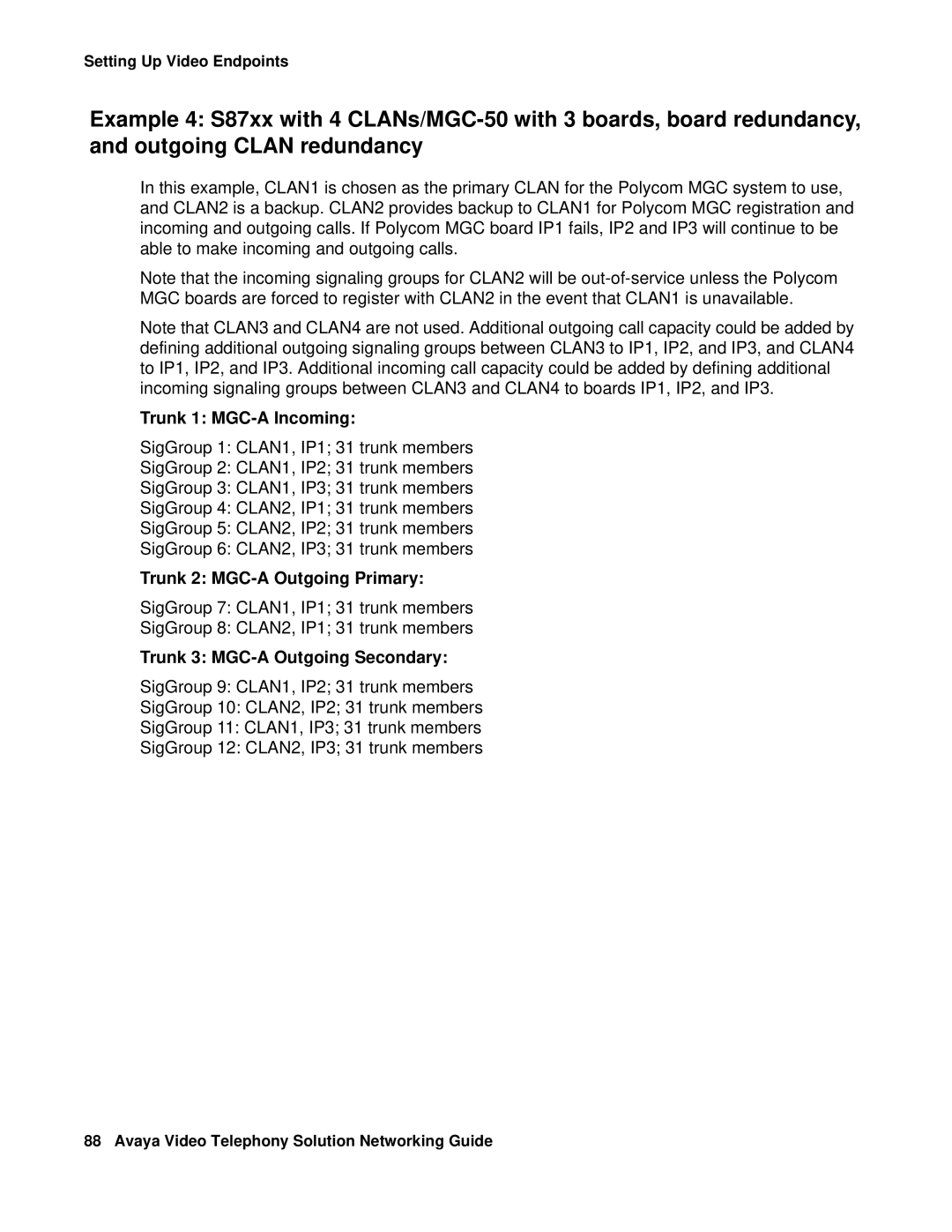Setting Up Video Endpoints
Example 4: S87xx with 4
In this example, CLAN1 is chosen as the primary CLAN for the Polycom MGC system to use, and CLAN2 is a backup. CLAN2 provides backup to CLAN1 for Polycom MGC registration and incoming and outgoing calls. If Polycom MGC board IP1 fails, IP2 and IP3 will continue to be able to make incoming and outgoing calls.
Note that the incoming signaling groups for CLAN2 will be
Note that CLAN3 and CLAN4 are not used. Additional outgoing call capacity could be added by defining additional outgoing signaling groups between CLAN3 to IP1, IP2, and IP3, and CLAN4 to IP1, IP2, and IP3. Additional incoming call capacity could be added by defining additional incoming signaling groups between CLAN3 and CLAN4 to boards IP1, IP2, and IP3.
Trunk 1: MGC-A Incoming:
SigGroup 1: CLAN1, IP1; 31 trunk members
SigGroup 2: CLAN1, IP2; 31 trunk members
SigGroup 3: CLAN1, IP3; 31 trunk members
SigGroup 4: CLAN2, IP1; 31 trunk members
SigGroup 5: CLAN2, IP2; 31 trunk members
SigGroup 6: CLAN2, IP3; 31 trunk members
Trunk 2: MGC-A Outgoing Primary:
SigGroup 7: CLAN1, IP1; 31 trunk members
SigGroup 8: CLAN2, IP1; 31 trunk members
Trunk 3: MGC-A Outgoing Secondary:
SigGroup 9: CLAN1, IP2; 31 trunk members
SigGroup 10: CLAN2, IP2; 31 trunk members
SigGroup 11: CLAN1, IP3; 31 trunk members
SigGroup 12: CLAN2, IP3; 31 trunk members
88 Avaya Video Telephony Solution Networking Guide
